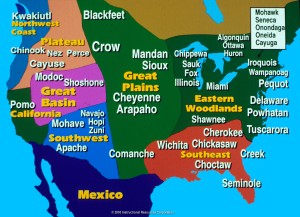While on the phone with my mom the other day we began talking about the crazy winter we had. Snow was on the ground behind our house well into the typical spring months. She mentioned the deer that had been in our yard looking for food when I was home for break over March and how they had been there for weeks afterwards. Still hungry, still looking for food. Through all of this I remarked how lucky we are to have all the luxuries we are afforded; never worried about where our next meal will be from, a roof to protect us from the cold elements at night, and electricity to make everything easier and more comfortable.
And then I started thinking about this class. I thought about the fact that my little town back in Massachusetts used to be a home for Native Americans (the Agawam to be specific). I also thought about how although this past winter was not completely the norm, we have had extra long winters before. It made me gain such an appreciation and amazement for the Native American groups that lived on this land for so many years, most of those without similar luxuries that we have today. Thinking about their ability to stay present through so many difficult feats –unpredictable weather, Europeans and colonialism, illnesses– has made me realize that they should not just be allowed to maintain their culture and sovereignty because they’ve been here before us and didn’t have a say in colonization, but because their ability to maintain culture and society despite so many hardships is something to celebrate and admire, and with that admiration should come freedom from rules set by governments that don’t understand who they are or why they should be their own peoples. Also, I think that there should be more of an emphasis placed on how truly remarkable the various Native American groups are for their ability to last longer than so many other groups, and that this emphasis should be taught more in school to foster more acceptance and understanding.
While I think our world still has a long way to go in terms of treatment of Native Americans, I think that if everyone was taught more about their culture and survival, despite our ancestors actively trying to get rid of them, there could be an increased respect and appreciation for these various groups of people.








